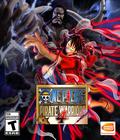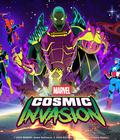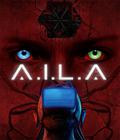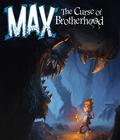Buy Max: The Curse of Brotherhood
If there's one thing Nintendo is known for, it's good platformers. Gamers have already received a fair share of platformers, with Super Mario Odyssey and Yooka Laylee in the 3-D space, and we'll soon get three more with Donkey Kong, Kirby, and Yoshi in 2-D. In between that gap, Stage Clear Studios released Max: The Curse of Brotherhood, which was initially released as an Xbox One exclusive in 2013 and since then has been ported to the PC, PS4, Xbox 360, and now the Nintendo Switch.
I remember having fun with The Curse of Brotherhood on the Xbox One, even though I didn't finish it. I was eager to revisit the game on the Switch to see if the gameplay holds up and to finally complete it. It's not a masterpiece and is a little rough around the edges, but there's enough here to keep you entertained for quite a while.
The Curse of Brotherhood starts off with our underage protagonist coming home to find his little brother chaotically playing in his room with his toys. Max is so infuriated and annoyed that he searches the internet for ways to get rid of his brother. He finds a magic spell that banishes his brother into a twisted fantasy world. Overtaken by guilt and the responsibility of being a big brother, Max follows him and tries to free him from the monsters.
The Curse of Brotherhood is the sequel to the game Max & the Magic Marker, so the gameplay is easily explained. Once we arrive in the fantasy world, a monster chases us, and we find refuge in a huge tree. An old lady promises to help us find our brother, who's being held captive by the evil Dr. Mustache. In order to be of help, she wants to enchant a weapon with her spirit and, since Max only owns an old marker, she enchants the marker to grant us environmental abilities.
The game consists of seven worlds with several stages, and new abilities are introduced along the way to accommodate increasingly harder puzzles. The marker enables us to draw environmental elements at designated spots in the world to help us proceed. We start off simply, with the possibility of raising the ground into pillars. What starts off as a simple mechanic becomes more complex to allow us to solve more complicated puzzles. After that, we learn to draw small branches, which can be used in a variety of different ways. Since we can draw freely, we can build little branch blocks to stand on to reach higher ground or round branches to roll downhill and trigger something. Before long, we gain more abilities — fireballs, streams and vines — all of which add to the layers of the platforming puzzles.
The underlying platforming mechanics are fine, but the process of jumping and climbing up ledges feels floaty. The game is very lenient in recognizing Max in relation to a ledge, and it has to because the heavy reliance on physics and movable objects would otherwise make it rather frustrating. As it is, it feels weird because it doesn't feel as precise as it should, but that enables fluid and fast movements. If it weren't for the puzzles, The Curse of Brotherhood would be an underwhelming platformer. Thankfully, the puzzles hold the experience together. They don't all hit the mark, but they showcase excellent level design and use the abilities in interesting and ever-evolving ways.
In one stage, we must build a crate to climb on and then use it to block deadly fireflies from reaching us. At a later point, we'll use it as a floating lifesaver to cross a stream. The abilities need to be combined to get through the latter stages. Vines attach to branches for Max to swing from, hang from, or cross streams to reach previously unreachable ledges. They are welcome brainteasers, but they never get too tricky to get us stuck. Unfortunately, the abilities are held back by subpar controls.
Drawing with a pen in a video game is already asking for trouble, and with a controller, it will almost certainly drive you crazy. Although the pen automatically locks onto points of interests and the drawing mechanic feels more natural over time, it always feels clunky and slow. However, the game increasingly expects you to complete certain drawing situations quickly in the face of imminent danger and certain death, which doesn't do the gameplay any favors. Thankfully, we can draw on the Switch's touch-screen when in handheld mode, but that doesn't always work as expected, either. Our finger usually moves faster than the game expects, and that creates an unexpected challenge. We also encountered issues where the game wouldn't detect touch-screen input correctly and displayed the pen next to our finger instead of underneath it, making it extra difficult to draw since it doesn't automatically snap to points of interest like it does with the controller.
As frustrating as the controls and platforming may be, the level design is easily the star of the game. It's the puzzles and design that will get you to push through to the end of this six-hour game. For completionists, there are collectibles and a secret in each level, and that adds some replayability. In the end, players get a decent amount of content for the $15 price tag. If you're uncertain about it, you may want to wait for a discount or try the demo on eShop.
Technically, the game is old but the graphics still look passable. It can be a beautiful game on occasion, and the different environments usually work in its favor. It's a game built on the Unity engine, but it runs smoother than other Unity titles we've seen in the past year, such as Overcooked. The far-away camera angles sometimes make it difficult to identify everything in handheld mode, but otherwise, it's a great fit for both docked and handheld mode.
Max: The Curse of Brotherhood is a solid puzzle game with some platforming elements, even if it isn't a particularly great platformer on its own. If you can look past the occasionally clunky controls and its inherent frustrations, you're in for a treat with the great level design.
Score: 6.5/10
More articles about Max: The Curse Of Brotherhood










 Max: The Curse of Brotherhood mixes traditional Scandinavian storytelling with an inventive and colorful 2.5D platformer, combining classic jump and run gameplay with smart and innovative puzzles.
Max: The Curse of Brotherhood mixes traditional Scandinavian storytelling with an inventive and colorful 2.5D platformer, combining classic jump and run gameplay with smart and innovative puzzles.

































